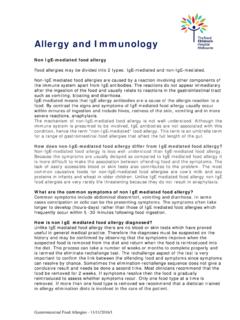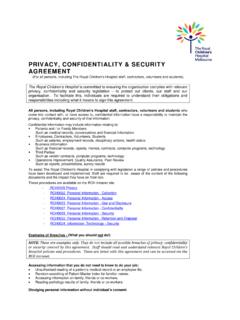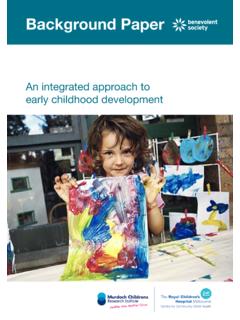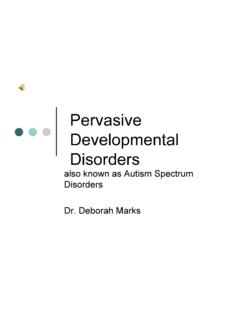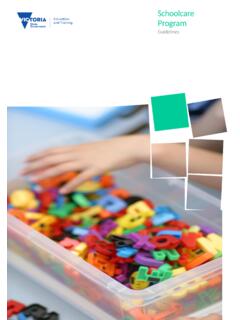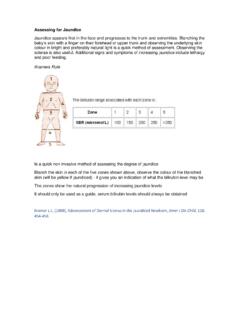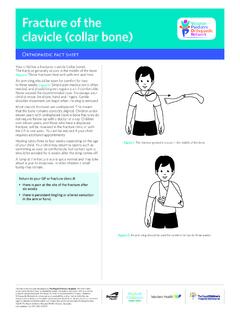Transcription of Australian Standards of Care and Treatment Guidelines
1 Australian Standards of care and Treatment GuidelinesFor trans and gender diverse children and adolescentsVersion Professor Michelle Telfer, Paediatrician, The Royal Children s Hospital Melbourne, Murdoch Children s Research Institute and The University of MelbourneDr Michelle Tollit, Research Officer, The Royal Children s Hospital Melbourne, Murdoch Children s Research Institute and The University of MelbourneDr Carmen Pace, Clinical Psychologist, The Royal Children s Hospital Melbourne, Murdoch Children s Research InstituteAssociate Professor Ken Pang, Paediatrician, The Royal Children s Hospital Melbourne, Murdoch Children s Research Institute, The University of Melbourne, The Walter and Eliza Hall Institute of Medical ResearchSuggested citationTelfer, , Tollit, , Pace, , & Pang, Australian Standards of care and Treatment Guidelines for Trans and Gender Diverse Children and Adolescents Version Melbourne: The Royal Children s Hospital.
2 2020 ContactThe Royal Children s Hospital Gender Service 50 Flemington Road, Parkville Victoria 3052 Australia Telephone: +61 3 9345 5890 Facsimile: + 61 3 9345 6343 Email: would firstly like to thank our colleagues within The Royal Children s Hospital Gender Service team who have made a significant contribution to this document including Donna Eade, Dr Charlotte Elder, Dr Debi Feldman, Alessandra Giannini, Professor Lynn Gillam, Professor Sonia Grover, Dr Christopher Haslett, Shantelle Hendy, Dr Porpavai Kasiannan, Dr Renata Kukuruzovic, Dr Tiba Maloof, Dr Michele O Connell.
3 Associate Professor Campbell Paul and Dr Zeffie would like to thank the Executive Committee of the Australian Professional Association for Trans Health (AusPATH) and clinicians across Australia and New Zealand who provided consultation and feedback on the content of the document. In particular, we would like to acknowledge Dr Fintan Harte, Mo Harte, Mr Andrew Ives, Dr Rachel Johnson, Dr Stephen Koder, Dr Ruth McNair, Dr Elizabeth Riley, Dr Jaimie Veale and Professor Sam Winter. We would also like to thank our colleagues in other specialist gender services across Australia who have contributed with their expertise and support.
4 This includes Dr Uma Ganti, Dr Ashleigh Lin, Simone Mahfouda, Dr Julia Moore, Elizabeth Saunders, Clinical Associate Professor Aris Siafarikas, Penelope Strauss, Catherine Thomas and Hans-willem van Hall from the Gender Diversity Service, Perth Children s Hospital, Dr Jemma Anderson, Dr Helen Chesterman and Dr Georgie Swift from The Women s and Children s Hospital Adelaide, Dr Anagha Jayakar and Dr Jason Westwater from The Royal Hobart Hospital and Professor Jennifer Batch, Olivia Donaghy and Dr Stephen Stathis from Lady Cilento Children s Hospital Gender Clinic & Statewide Service, Children s Health Queensland.
5 Thank you to the significant contribution made from the trans and gender diverse community including Brenda Appleton and Transgender Victoria, Transcend, Parents of Gender Diverse Children, The Royal Children s Hospital Gender Service Consumer Advisory Group, Victorian AIDS Council and The Victorian Government Trans and Gender Diverse Expert Advisory Group. Endorsement by the Australian Professional Association for Trans Health (AusPATH)The Board of Directors of the Australian Professional Association for Trans Health (formally ANZPATH) has endorsed these Guidelines for use in the care of trans and gender diverse children and adolescents across the Commonwealth of of contentsIntroduction.
6 2 Terminology .. 4 General principles for supporting trans and gender diverse children and adolescents .. 5 Individualise care .. 5 Use respectful and affirming language .. 5 Avoid causing harm .. 5 Consider sociocultural factors .. 6 Consider legal requirements .. 7 Supporting trans and gender diverse children .. 9 Psychological support .. 9 Social transition .. 9 The roles of the clinician in the care of the pre-pubertal child .. 10 Support and Treatment for trans and gender diverse adolescents .. 11 Psychological support .. 11 Voice and communication training.
7 14 Social transition .. 14 Fertility counselling and preservation procedures .. 14 Puberty suppression .. 15 Gender affirming hormone Treatment using oestrogen and testosterone .. 16 The roles of the mental health professional .. 18 The roles of the paediatrician, adolescent physician or endocrinologist .. 19 The roles of the gynaecologist and/or andrologist .. 20 The roles of the nurse .. 20 The roles of the speech pathologist .. 21 The roles of the general practitioner .. 21 The roles of the bioethicist and the legal practitioner .. 22 Commencement of puberty suppression using gonadotrophin releasing hormone analogues (GnRHa).
8 23 Commencement of gender affirming hormone Treatment using oestrogen or testosterone .. 24 Surgical interventions for trans and gender diverse adolescents .. 25 transition of care to adult health providers .. 26 Appendices .. 27 Appendix 1: Recommended medical examination and investigations for puberty suppression using gonadotrophin releasing hormone analogues (GnRHa) .. 27 Appendix 2: Recommended medical examination and investigations prior to commencement and throughout Treatment with oestrogen or testosterone: .. 28 Appendix 3: Induction of feminising hormones for adolescents: Treatment recommendations.
9 29 Appendix 4: Induction of masculinising hormones for adolescents: Treatment recommendations .. 30 References .. 311 Australian Standards of care and Treatment Guidelines for trans and gender diverse children and adolescents Version Australian Standards of care and Treatment Guidelines (ASOCTG) aim to maximise quality care provision to trans and gender diverse children and adolescents across Australia, whilst recognising the unique circumstances of providing such care to this population. Recommendations are made based on available empirical evidence and clinician consensus, and have been developed in consultation with professionals working with the trans and gender diverse population across Australia and New Zealand from multiple disciplines, trans and gender diverse support organisations, as well as trans children and adolescents and their families.
10 They have been endorsed by the Australian Professional Association for Trans Health (AusPATH), the peak organisation in the region actively promoting communication and collaboration amongst professionals of all disciplines involved in the healthcare, rights and wellbeing of people who identify as trans or gender are potential challenges in accessing trans and gender diverse healthcare for the Australian population. This is especially the case for children and adolescents who are vulnerable due to cultural and linguistic diversity (including Aboriginal and Torres Strait Islander populations), out of home care , intellectual disability, or detention within the youth justice system.

